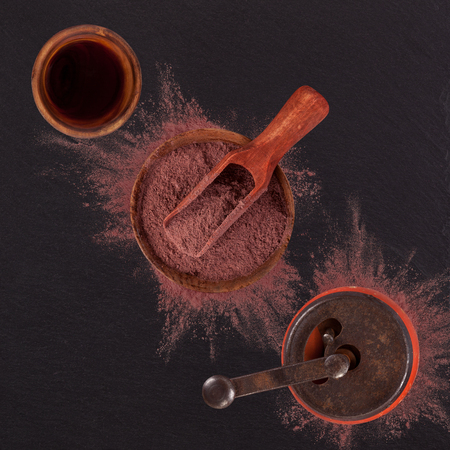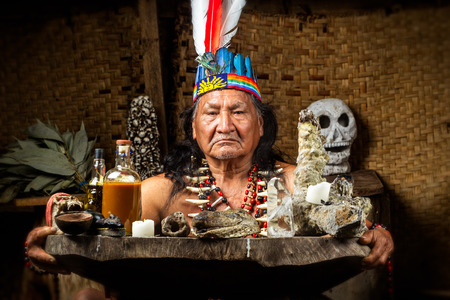Ayahuasca Anonymous, Part 2

MDMA-assisted psychotherapy has been designated as a breakthrough drug treatment for PTSD by the FDA. Ketamine has been widely touted as a treatment for depression and its biochemical “mirror image,” esketamine, has been designated as a breakthrough treatment for depression. Johnson and Johnson hopes to file an FDA application for the approval of esketamine by the end of 2018. The tide of the alleged therapeutic benefits of hallucinogens is rising. As we saw in Part 1 of this article, another psychedelic known as ayahuasca is being put forth as a potential treatment for alcoholism and drug addiction. So let’s take a closer look at ayahuasca use and its effects.
In Part 1 of Ayahuasca Anonymous we looked at the findings of a study by Lawn et al. published in Scientific Reports on the potential ayahuasca has as a treatment for alcoholism and found its claims questionable. But psychedelics are the newest fad in psychiatric treatments and I suspect we haven’t heard the last of research into the potential benefits of ayahuasca for alcoholism and drug addiction. So what is it, and how does it work?
Ayhuasca is a psychoactive tea brewed from the Amazonian vine Banisteriopsis caapi and leaves of the bush Psychotria viridis. Taken together, the combination allows the hallucinogen in Psychotria viridis, dimethyltryptamine (DMT), to activate. This induces “several hours of a dream-like altered state of consciousness characterized by intense visual, auditory, ideational and emotional effects,” according to Thomas et al. in “Ayahuasca-Assisted Therapy for Addiction.” As a result of increased tourism to the Amazon, ayahausca drinking has become a transnational phenomenon. Itinerant ayahuasqueros (individuals trained to administer ayahuasca in the traditional Amazonian healing ritual) have been conducting rituals in Europe and North America.
According to Fábregas et al. in “Assessment of addiction severity among ritual users of ayahuasca,” Brazilian churches that use ayahuasca in their rituals have faced legal proceedings in recent years as they expanded into Europe and North America. This was due to DMT being classified as a controlled substance in several countries. The US DEA scheduled DMT as a Schedule I Controlled Substance in 2011. It is a Class A drug, along with heroin, LSD and MDMA in the UK and a Schedule III drug in Canada, making it illegal. In Canada you can face up to ten years in jail if you are found guilty of trafficking ayahuasca.
Both Thomas et al. and Fábregas et al. noted that ritual ayahuasca use does not seem to lead to addiction. Fábregas et al. speculated this was due to DMT acting on serotonergic neurotransmitters within the so-called “neural reward circuit” of the brain instead of the dopaminergic neurotransmitters activated by of drugs of abuse. Ethnographic research also challenged the classification of ayahuasca as an addictive substance. “Furthermore, the therapeutic use of ayahuasca in indigenous traditional medicine is socially sanctioned and politically tolerated in Bolivia, Ecuador, and Colombia.” In Peru, it has been declared part of the national cultural heritage.
Thomas et al. noted where ayahuasca is used within a therapeutic community setting in Tarapoto Peru to help overcome drug addiction. Similarly, a treatment program in Brazil combines the ritualistic use of ayahuasca with psycho-social rehabilitation methods. “Although these programs claim improved health outcomes for patients who complete them, neither has been evaluated with sufficient scientific rigor to provide definitive evidence of the success of their approaches.” The researchers sought to apply ayahuasca-assisted group therapy to a population of First Nations and Aboriginal peoples in Canada. “We posited that this novel form of therapy could enhance the ability of participants to make conscious healthy choices and resist unhealthy urges by eliciting improvements in several attributes related to problematic substance use.”
They found that the ayahuasca retreats correlated with improvements with several cognitive and behavioral states, which they hypothesized would be positively related to recovery from problematic substance use. Participation was also related to improvements in quality of life. The findings suggest this novel form of treatment may facilitate reduced cocaine use and other positive health changes.
The changes in substance use reported by participants by the end of the study period—that is, that cocaine, alcohol and tobacco use declined, whereas cannabis, sedative and opiate use did not—may reflect the fact that in some cases the latter substances were medically prescribed. Some participants reported being in a methadone maintenance program (which was not a criterion for exclusion from the study) and others reported using medical cannabis under the recommendation of a physician. Of note is the fact that cocaine and alcohol were identified as the substances of primary concern by the majority of participants.
The authors noted how the limited number of study participants (18) and the absence of any matched controls means it was “impossible to assign direct causality to the treatment or to determine whether the findings may be generalized to other populations.” The study was not designed to assess the relative effects of the various other aspects of the retreats besides the use of ayahuasca. Also, it was possible that the intercultural bridging occasioned by the ceremonies may have introduced a positive, confounding effect to the retreats. The connection between the Amazonian and North American indigenous peoples within the context of sharing an important ceremonial healing practice “may have had positive therapeutic effects on its own, independent of the ayahuasca drinking.” So it is not possible to generalize the results of the study to other first Nation peoples in Canada or other aboriginal peoples elsewhere.
Fábregas et al. studied members of several Brazilian ayahusaca churches from individuals living a community within the Amazon rain forest and from those living in an urban setting. The Addiction Severity Index (ASI) was used to assess potential drug abuse-related problems. Follow up studies were conducted after one year. The ayahuasca-using groups scored significantly lower on the ASI Alcohol Use subscale. At the one-year follow up those differences were still significant for the Amazon rain forest community of ayahuasca users, but not the urban group.
As with the Thomas et al. study, the cultural context of these ayahuasca users, all who were members of ayahuasca churches, limits the generalization of the reported positive results beyond the population studied. Significantly, the failure of the urban group of ayahuasca users to have a significantly lower ASI score after the follow up year was hypothesized to have been due to the member’s involvement with the church. This can be understood as suggesting the more isolated community of the Amazon rain forest group facilitated behavior leading to lower ASI scores. If so, the ayahuasca use could have simply been incidental to the findings of lower ASI scores. It could be that the ability to foster a closer community of church members within the Amazon rain forest group was the significant factor in maintaining lower ASI scores over the year, not the use of ayahuasca.
An addendum to the Thomas et al. study indicated the Canadian physician who initiated the ayahuasca-assisted group therapy in Canada was reprimanded and threatened with legal action by Health Canada if he continued his work with ayahuasca as an addiction treatment. An article in The Globe and Mail said the doctor would reluctantly comply with the order, as he didn’t want to break the law. He hoped to get permission to use it in a therapeutic context, but he did not receive it. The Health Minister ruled the Amazonian brew was “an illicit preparation of controlled substances” and even approving it for ceremonial use within a religious context would not be in the public interest.
Ayahuasca is illegal in the US, the UK and Canada. It’s positive effects were reported in two studies done with populations where the context of the healing ritual in which the drug was given likely had a significant placebo effect on its results. An international survey reviewed in Part 1 of this article found that alcohol consumption was reported to be minimally lower than Psychedelic [drug] Users—less than one point on the AUDIT, the Alcohol Use Disorders Identification Test. Its perceived lower potential for addiction is at least partly based on the likelihood of a participant in the ayahuasca ritual becoming nauseous and vomiting. I don’t think we’ll be seeing its widespread use in addiction treatment any time soon.

